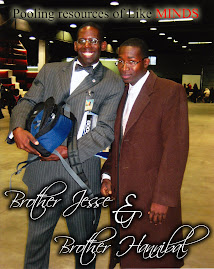at
Men Class Mondays- 8pm- 10pm
General Meeting Wednesdays- 8pm- 10pm
Jumah Prayer Fridays- 1pm-2pm
Study Group Fridays- 8pm- 10pm
Women Class Saturdays- 9am

|
"She's got the whole package," Stephens says. "She's in a class by herself."
http://us.cnn.com/2009/POLITICS/04/28/first.lady/index.html
Information Researched By: Sister Anonymous

 | Water whipped up by Hurricane Gustav sloshes over the side of a levee on the Industrial Canal in New Orleans on Sept. 1. |
| Jim Watson / AFP - Getty Images file |
NEW ORLEANS - New Orleans should increase the strength of new levees being built to protect against catastrophic hurricanes, elevate more houses and abandon neighborhoods that rest below sea level, an independent research panel said Friday.
Levees under construction by the Army Corps of Engineers aren't being built to a high-enough flood protection standard, said the report by the National Academy of Engineering and the National Research Council.
The independent panel of experts was asked by the federal government to review the corps' investigation of levee failures during Hurricane Katrina and its work to avoid such a catastrophe again. The corps is spending about $14 billion to raise levees and build floodgates able to withstand a "100-year" storm, or a moderately dangerous hurricane with a 1-in-100 chance of hitting any given year. The corps plans to finish by 2011.
"For heavily populated urban areas, where the failure of protective structures would be catastrophic — such as New Orleans — this standard is inadequate," the report said.
Instead, New Orleans should be protected by a "500-year or maybe 1,000-year protection," the type of engineering standards used in earthquake zones or along major rivers, said Richard Luettich Jr., the director of the Institute of Marine Sciences at the University of North Carolina and a member of the committee.
Living with risk
Friday's report was the final review of work done by a team of engineers hired by the corps to investigate levee failures and develop solutions. The leader of that team, which is called the Interagency Performance Evaluation Task Force, said the levee system being built by the corps was a good starting point.
"The current system being built is a very good baseline," said Ed Link, a civil engineer with the University of Maryland who led IPET. "It has a lot of resilience built into it, so the potential for catastrophic loss is much less."
The corps is considering construction of a system that would offer protection against a 500-year storm, but its studies are still in their early phases.
Friday's report also said the city should discourage people from moving into areas vulnerable to storm-surge flooding, in particular those that are below sea-level.
"If there is one thing we've all learned from this, living in New Orleans entails risk," Luettich said. "Smart decisions have to be made about where people live."
The issue of whether to abandon certain areas has come up several times as the city's continued rebuilding and has drawn sharp responses, particularly from those who believe they should be allowed to rebuild where they'd lived before the storm. Mayor Ray Nagin has said the government shouldn't dictate where people can live.
LaToya Cantrell, president of the Broadmoor Improvement Association, said she generally agrees with the report but rejects any suggestion that areas below sea level should be avoided.
Lawsuit settled
Meanwhile, a Virginia company has agreed to pay $4 million to settle claims it breached a contract to set up a base camp for relief workers in Louisiana after Hurricane Katrina, the Justice Department announced.
Lighthouse Disaster Relief and two of its partners, Gary Heldreth and Kerry Farmer, were accused of billing the Federal Emergency Management Agency for work they never performed after the August 2005 storm.
The settlement resolves a civil lawsuit that accused the contractor of violating the False Claims Act.
The government said the contractor agreed to shelter and feed 1,000 relief workers in St. Bernard Parish, but the camp never supported more than 400 people.
http://www.msnbc.msn.com/id/30391989
Information Researched By: Sister Anonymous













